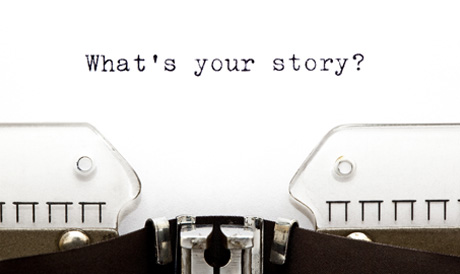Before You Start
In order to capture the attention of grant makers you need to tell a story that tugs at their emotional side. There are three tips to tell a successful story: 1) tell a story within a story, 2) every story needs a protagonist, 3) show you audience what the future could look like.
Your Story Template
A quick and easy tip to make sure you haven’t left out any important part is to follow this template: Tell how you connect personally with the cause (your story)-> tell about the current conditions of the issue your trying to get funding for->tell what has to happen to fix the current conditions->state how you can fix the problem->end with telling people how they can help… “the ask.” Now, I’ll show you how to use this in a real example. Say you are asking for funding to get after-school programs in your area for troubled youth. Here’s how to fit that in the template above: Tell how you personally connect with this issue->tell about the problems children are going through->state what kinds of things help people in this situation->explain the solution of after-school programs->tell your audience that funding is needed in order to help children lead safer, fuller, happier lives.
What is and What Could be
It is necessary that while writing your grant proposal story you create an outline of “what is” and “what could be.” This helps your audience realize what the status quo is, and why it needs to change. It evokes an emotional response, which is what you want because response means action.
How to do it
Take the example from above; a grant proposal to get funding for after-school programs for troubled youth. Here’s how you could outline your ideas with the ‘what is’ and ‘what could be’ theory: What is…Children with behavioral problems inside and outside of school, such as; poor schoolwork, school absences, irritability, and aggressiveness. What could be…Emotionally supportive environment for these children to help lessen these problems. What is…families that do not know how to deal with the child and their behavioral issues. What could be…Meetings at the end of every month with the parents to educate them on what they could do at home for their child’s emotional needs when not at the program. The blissful ending…Give children fuller, happier lives. These are only a few of the examples of ‘what is’ and what could be.’ You can make your list longer and then incorporate them into your story.
The Protagonist vs. Antagonist
Any good story has a good guy and a bad guy. People crave to see good overcome evil, because the antagonist gives the audience one shared goal to work to overcome together. So, let’s take the example above and find the protagonist and the antagonist to incorporate into the story. The protagonist, or good, is the after-school program and happy children from it. The antagonist, or bad, is the issues these children are facing. So, by showing this the audience can decide to take action against the bad in the story.
The Ask
Be straightforward with your audience. You need to give them concrete numbers for how much money you are looking for and what it will break down to cover. Do not go around the issue if you feel uncomfortable asking for money. By putting a dollar amount to ask it allows your audience and grant makers to outline what it will be used for and is evidence for how you will address the issue at hand. Here’s an example for the ask for a grant maker:
“I estimate my need to get this project up and running for one year to be about 51,000 dollars. This would cover the cost of four one-hour after school programs at two elementary schools and two middle schools. Included in this is the cost to provide one mental health counselor at each program. Also, included in this is one-week’s worth of summer training for the other volunteers of this program. Additionally, it would cover books, crafts, toys, and snacks for each program. Lastly, it would provide one start of the year education program for teachers, staff, and faculty to get acquainted with the new program and know how to manage these children in their own classrooms. It is my hope to raise 20,000 dollars through other funders, so I am asking you to consider covering the remaining 31,000 dollars. I greatly look forward to hearing from you and in the meantime would love if you could send application guidelines or any other information that could be of use.”
After the Story
If you feel comfortable enough you can take your story and turn it into a video to use on other funding websites. You can take all of this information and pair it with visuals and statistics so that you are able to target both an audience’s emotional appeal and logical appeal. Since a video can be easily shared among social networking sites, although it may not reach the right audience first, it can make it to them at some point.


